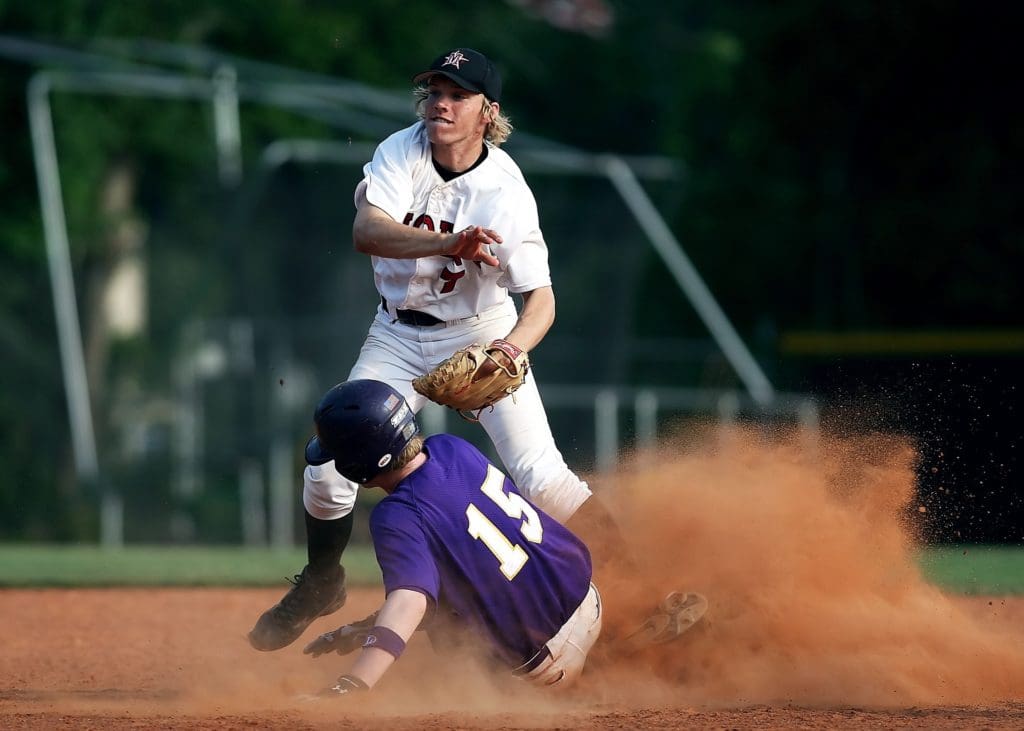Returning to Sport? Hear from Athletic Trainers on How Optimize Your Training & Beat Deconditioning
Bonus FREE downloadable training packet at the bottom!

No matter what sport you play and what level you’re at, every athlete, from youth baseball league players to weekend warriors to the pros, was impacted by covid this past year. Many towns even took down goal posts and closed basketball courts to prevent groups from gathering. If you’re an athlete – especially a student athlete – you likely had to change your training schedule and approach drastically, if you were able to train at all.
Now that the world is opening back up again and sports seasons are getting ready to re-launch, there is a risk that the “deconditioning” that may have occurred in the downtime can cause problems for athletes who aren’t fully prepared to jump back into activity. Due to the long periods of decreased activity, it’s important to slowly ease back into training to prevent injuries.
March is National Athletic Training Month, celebrating the healthcare professionals who keep athletes safe during sport and are the first to respond when injuries occur. ATs are experts on keeping all levels of athletes safe, which is why they are the perfect resource for those returning to sport after time off.
At PTSMC, we are proud to have Athletic Trainers at high schools around the state providing services for student-athletes in our communities. Here are some tips, tricks and best practices from our expert ATs for athletes looking to return to activity:
1. Start Slowly, and Never Skip the Warm-up
If you participate in a sport like soccer, which involves lots of running and quick movements, it’s not a good idea to immediately try and sprint as far and as fast as you can. The first step to safely returning to sports is to make sure that you’re warming up your body properly with a dynamic warm-up routine. Dynamic warm-ups are movements that mimic the sport movements and prepare the body by moving the joints through the full range of motion it’s about to experience. For example, a great dynamic stretch for running would be to do butt kicks, which stretch your quads while contracting your hamstrings and glutes. Spend a decent amount of time on your warm-up and mobility routine, and make sure to focus on the muscles and joints most used in the activity.
Slowly easing into the activity will also help to avoid injury and give your cardiovascular system (heart and lunges) time to build conditioning back. You want to start with short periods of less strenuous activity to start. This may be much less than you’re used to, but as you begin to feel more comfortable you can increase the duration and effort.
2. Focus on Technique Before Strength and Speed
Proper technique is the most important element of any activity, as proper technique not only prevents injuries but increased performance. If you are deadlifting, proper form is much more important to results than how much weight you lift – which is to say, if you’re lifting a ton of weight but doing it with incorrect form, odds are you will hurt yourself and/or not target the right muscles for maximum impact.
It’s best to start with bodyweight exercises, where you can focus on perfecting your technique without adding extra strain on your body. After you’ve perfected your form, you can add weight to start building strength. The key is to start with low intensity and high repetitions, and then gradually adjust as your body responds by increasing intensity and decreasing repetitions.
3. Fuel and Hydrate for Performance
Sedentary behavior is often paired with dehydration and possibly poor nutrition – a combination many of us have likely become used to throughout the pandemic. Fuel your body for sport by eating a well-balanced diet with healthy fats, slow-digesting carbs, and lots of protein. Hydrating is equally as important, as it helps with blood flow during activity, keeps your digestive system healthy and keeps your body temperature down as you sweat. You should start hydrating at least a few days before sport to prevent dehydration, as well as drinking 16 to 20 ounces of water 1-2 hours prior to activity, and taking water breaks every 20-30 minutes.
4. See your Athletic Trainer (or a local PT!) If You Have Any Aches or Pains
If you’re a student athlete experiencing aches, pain or mobility issues during activity, reach out to your athletic trainer or a local physical therapist so they can assess your problem and help you feel better. If you’re not a student and you’re experiencing pain, reach out to one of our clinics across the state – after all, it’s always better to treat pain immediately rather than hoping it goes away, which can cause a more severe injury!
Our ATs also put together some specific exercises for each sport to help your body prepare for training. Submit your information below to download a FREE training packet that covers returning to sport for jumping athletes, runners and those throwing or using regular overhead motions.
